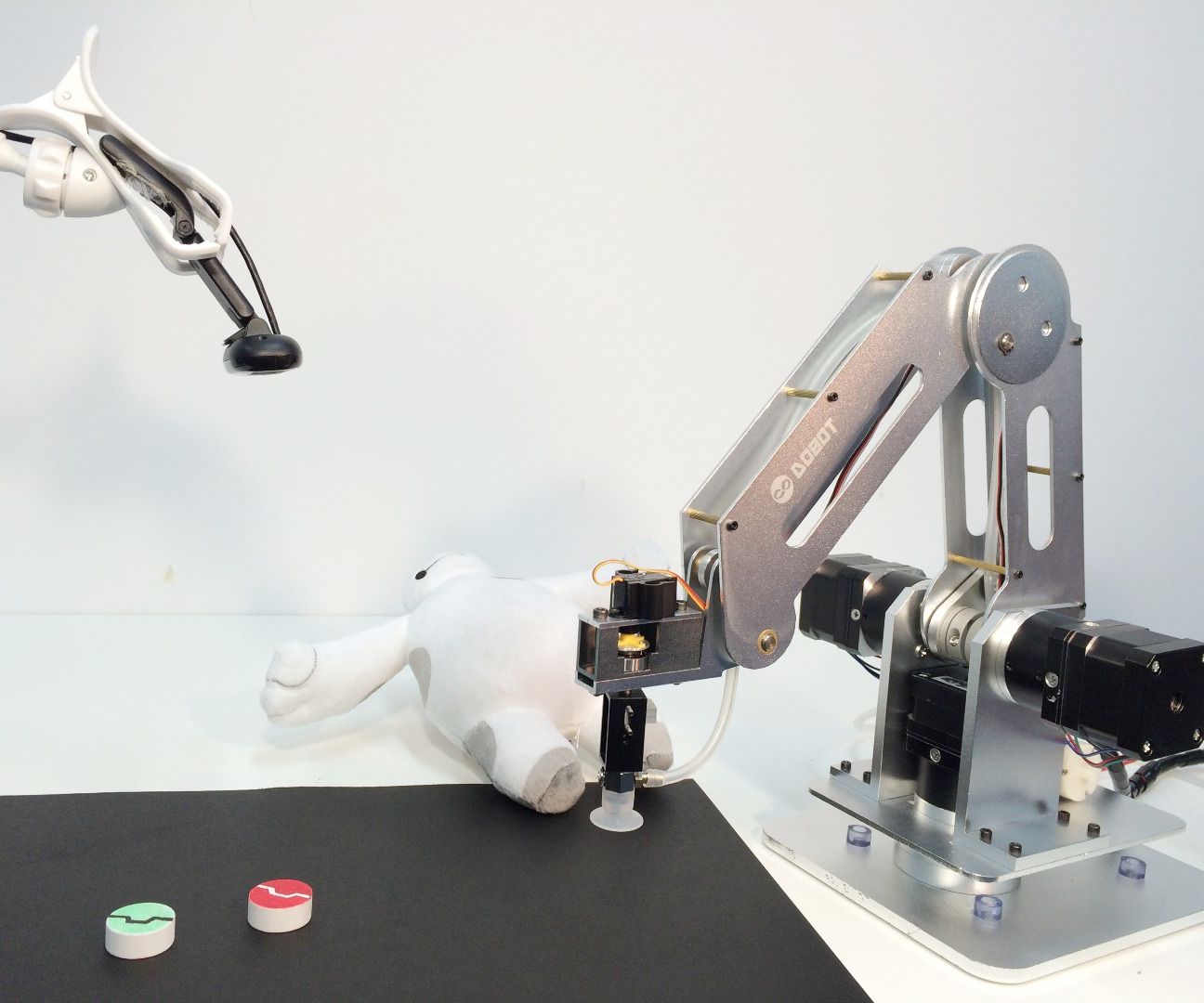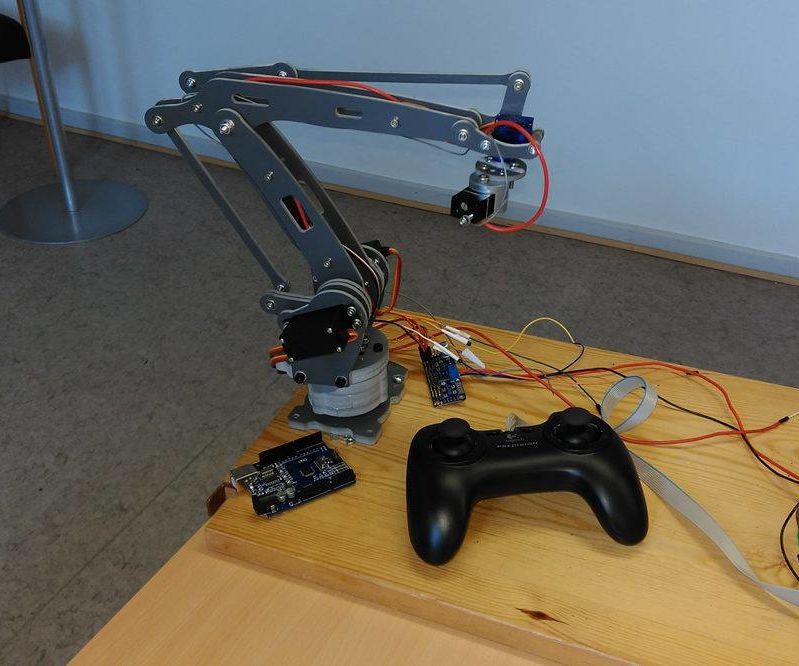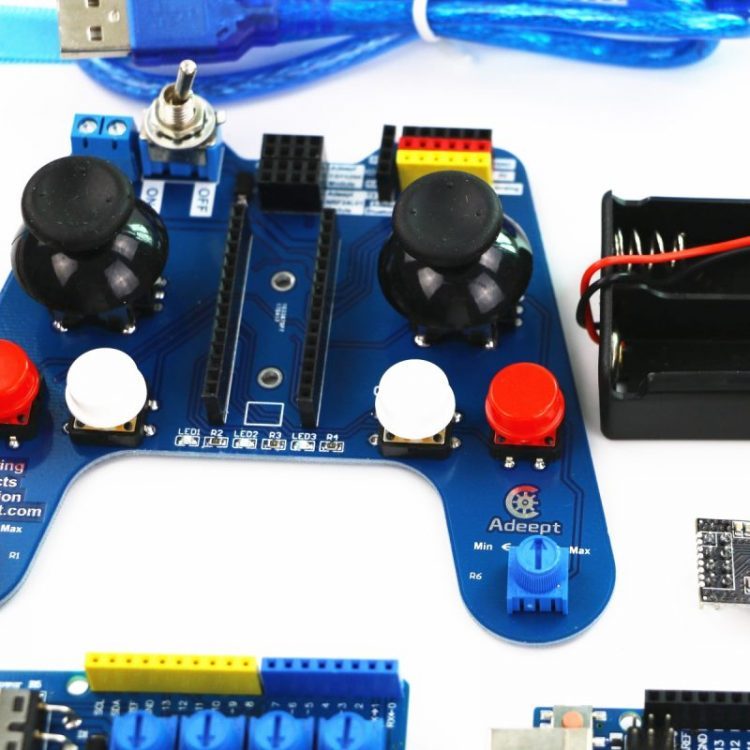
- #ARDUINO ROBOTIC ARM DRIVERS#
- #ARDUINO ROBOTIC ARM DRIVER#
- #ARDUINO ROBOTIC ARM FULL#
- #ARDUINO ROBOTIC ARM SOFTWARE#
- #ARDUINO ROBOTIC ARM BLUETOOTH#
#ARDUINO ROBOTIC ARM DRIVERS#
Select the drivers folder an click OK, then click Next.
#ARDUINO ROBOTIC ARM SOFTWARE#
Another dialog appears: navigate to the folder with the Arduino software that you just downloaded.
#ARDUINO ROBOTIC ARM DRIVER#

If the installer does not launch automatically, navigate to the Windows Device Manager (Start>Control Panel>Hardware) and find the Arduino Robot listing.

The following instructions are for Windows 7. There's nothing to configure with the robot, so you can close this dialogue by clicking the red button in the top left of the window.

The SD card is used to store information for the robot to read. Attach the protective covering to the underside of the robot as shown below. This will help prevent any objects on the ground from damaging the motor board. Once that's in place, you'll need to attach the protective cover for the botom board. The screen should be oriented so that the blue text with the text "SD Card" is close to the buttons and speaker. When you first open the robot, you'll need to set up a pair of things before it is ready to roll.įirst, you'll need to insert the SD card into the slot on the backside of the TFT screen, and then insert the screen into the socket on the control board of the robot. As you become more experienced, you may want to tinker with the Motor Board. If you're just getting started with electronics and programming, you should work with the Control Board. There are two different boards on the Robot: the Control Board (top) and the Motor Board (bottom). You can control all these sensors and actuators through the Robot library.

It also has a speaker, two motors, and a color screen as outputs. The robot comes with a large number of inputs two potentiometers, five buttons, a digital compass, five floor sensors, and an SD card reader. It comes with a number of of project examples you can easily replicate, and it is a powerful robotics platform that you can hack to perform all sorts of tasks. The hardware is open-source, and comes with a digital content platform containing many more step-by-step lessons and projects.With the Arduino Robot, you can learn about electronics, mechanics, and software. It can be assembled in several different ways to facilitate different movements, including attaching a solar panel and tracking the movement of the sun. Inside, there are six Arduino RS485 Smart Servo Motors, four in the arm and two to control the claw. All its plastic parts are 100% recyclable. The arm itself is made from recycled food cartons rather than virgin ABS plastic, with an aluminum layer for strength. The Carrier also has IO headers to connect accessories. There's also a new version of the Braccio Carrier board, with a mini joystick and small LCD screen, to enhance custom projects.
#ARDUINO ROBOTIC ARM FULL#
It sticks to the usual Arduino Nano form factor, and has full support for the entire RP2040 software ecosystem, including MicroPython.
#ARDUINO ROBOTIC ARM BLUETOOTH#
The Nano Connect joins the usual RP2040 controller chip with 16MB of additional flash storage, a microphone and motion sensors, plus a u-blox NINA-W102 radio module which brings Wi-Fi and Bluetooth 4.2 to the board.


 0 kommentar(er)
0 kommentar(er)
